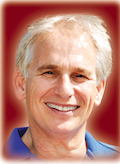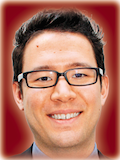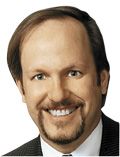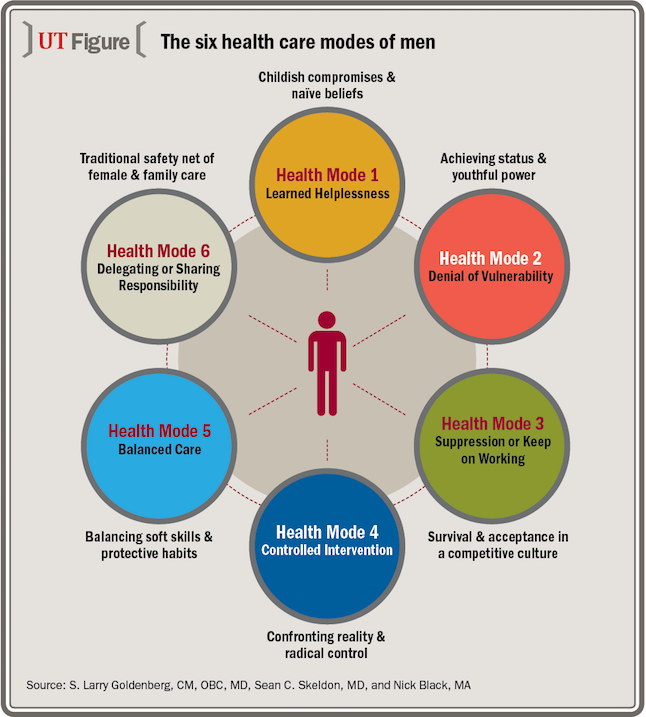Article
Personalized messaging: Communicating with men about their health
Author(s):
In this article, we describe the use of morphological market research to identify six themes or modes that shape men’s health behaviors and how those modes can be ultimately used to improve men’s health.




We know that the longevity gap between men and women is much less biological than it is behavioral (Lancet 2012; 380:2144-62), but have we become so used to men dying earlier than women that it is just an accepted fact in our society? While these sex differences are well recognized and accepted (BMJ 2001; 323:1058-60; J Mens Health 2009; 6:246; BMJ 2001; 323:1061-3; Urol Clin North Am 2012; 39:37-51), attempts to effect change have proven difficult, principally because the underlying mechanisms and the ingredients of effective interventions are poorly understood (BMC Health Serv Res 2008; 8:141).
Read: Cost-effective workup of the infertile male patient
Behaviors are both challenging to influence and to change once they have been established. Traditional masculine characteristics-competitiveness, stoicism, denial, and self-reliance-are all believed to contribute to men’s reluctance to seek help (J Mens Health 2011; 8:7-15; J Adv Nurs 2005; 49:616-23). Understanding how these characteristics intersect with sociocultural, psychological, and behavioral determinants of health could inform powerful strategies for engaging men with their health. What is needed is an understanding of the implicit or underlying motivations involved in men’s health decisions and behaviors. Essentially, discerning the optimal strategy to engage men about their health can be distilled down to a messaging, communication, or marketing question (J Mens Health Gend 2004; 1:275-6). The mechanism by which to effectively communicate with men has been unexplored and undefined.
In this article, we describe the use of morphological market research to identify six themes or modes that shape men’s health behaviors and how those modes can be ultimately used to improve men’s health.
NEXT: Morphological market research defined
More on Men's Health
Promoting TRT online: Balanced information lacking
Dr. Google creates anxiety, opportunity
mCRPC advances come with choices, challenges
Morphological market research defined
Morphological market research is one of the practical applications of morphological psychology, originally advanced by Wilhelm Salber in Germany. It is an independent theoretical foundation in qualitative research based on the psychological tensions that influence human experience and behavior. Often applied in contemporary retail research, morphological market research is employed to decipher the fundamental motivating forces and unconscious processes behind everyday activities and decisions (J Advert Res 2004; 44:210-5).
Also see - Men's health: How urology and primary care can work together
Similar to other qualitative research methodologies (Qual Health Res 2007; 17:1372-80), interpretative analysis in morphological market research involves an iterative process of decontextualization and recontextualization to distill data into a set of common concepts or needs. Common conceptual themes or modes can be discerned to create a final morphological model of market and consumer motivations that could describe men’s intrinsic decision-making processes regarding their health.
The Canadian Men’s Health Foundation applied this methodology in a pilot study of 40 Canadian men, aged 30 to 49 years, to identify common themes involved in the motivations that shape men’s health behaviors (unpublished data). Our analyses revealed six prominent health modes or themes: learned helplessness, denial of vulnerability, suppression, controlled intervention, balanced care, and delegation (figure). Each mode can occur alone or concurrently with others, and each is influenced by factors that include gender, socioeconomics, family dynamics, cultural background, and individual personality.
NEXT: Six health care modes in men identified

Six health care modes in men identified
The six identified health care modes are defined as follows:
Learned helplessness describes a health care mode where men feel unwilling or unable to look after their own health. The factors influencing this health mode are often complex and may include childhood abuse, trauma, psychological illness, and delayed gratification issues-all of which can deplete control and make proactively dealing with health a lower priority for men.
Recommended - Alternatives to T therapy: Lessons from male infertility
Denial of vulnerability describes men’s focus on increasing their physical strength and sexual appeal. Factors influencing this health mode are societal and biological. For example, men are socially encouraged and sexually rewarded for looking younger and stronger and being financially successful, and they are penalized for showing signs of weakness and vulnerability. This can lead to a dangerous overestimation of personal capabilities.
Suppression or “keep on working” is a health care mode in which men deprioritize health in order to provide for their family and become blind to their own body. Factors that influencing this mode include financial and social pressures on men to provide, the fear of stopping to deal with health, and the fear of losing their role as provider. There is also a preference to control their body and write their own health script.
NEXT: Controlled intervention, balanced care, delegating or sharing responsibility
Controlled intervention describes a health care mode where men are scared or shocked into a period of controlled health intervention. Underlying factors include facing the health consequences of personal actions or seeing the decline of someone who is closely connected. This can create a “window of change” where intervention or behavior modification is considered.
Balanced care describes a health care mode in which men have the soft skills, protective habits, and social support they need to deal with their health in a balanced and proactive way. The factors influencing this health mode include having healthy male role models, degree of personal conscientiousness, and access to medical and lifestyle support. There is also a social stigma, or sense of emasculation, associated with men caring about their health that can act as a barrier.
Have you read - USPSTF guide’s impact: The jury is still out
Delegating or sharing responsibility indicates men’s tendency to either delegate health decision-making or learn to enjoy and share health responsibility with women. Factors influencing this health mode include whether men were taught and enjoyed the soft skills associated with health care when growing up, the extent to which women assume the role of caregiver in their life, and resistance by society to changing these gender roles.
Identifying which mode, or modes, a man aligns with can be leveraged into strategic marketing or messaging opportunities (Morphological Psychology and its Potential for Derivation of Requirements from Web Applications using Examples of Customer Self Care Instruments. In: Application Management. Wiesbaden, Germany: Springer-Verlag; 2011) and allows for the possibility of customizable, targeted health (“precision”) messaging and communication that is optimized to his personal and specific needs. These findings offer the potential to improve on and expand the current framework for men’s health promotion.
NEXT: Application to patient care
Application to patient care
What does this have to do with everyday urology and the care of male patients?
As leaders and advocates for men’s health “beyond the penis and the prostate,” urologists have an opportunity to lead a globally expanding men’s health movement. Because so many men will see a urologist as the first portal of entry into their health care world, this presents a unique opportunity to advise them about general preventive health, personal risk factors, environmental issues, healthy lifestyle modifications, general screening issues, and proactive recognition of symptoms(www.dontchangemuch.ca).
It has been estimated that 70% of chronic diseases in aging men are preventable by modifying risk factors, including tobacco smoking, physical inactivity, poor diet, obesity, and alcohol abuse. As a profession, we are facing both the challenge and the opportunity to begin the health conversation with our male patients and their partners. The six health care modes provide an initial framework for communicating with men most effectively-in a precise, personalized manner-about improving their health.
Conclusion
The potential to develop a men’s health program in our urology practices is real. Building on the expertise we currently have, we can become global leaders in the field and develop a strong model of care, awareness, education, and research. We need to work with our institutions and government leaders to coordinate a system that will better understand men’s attitude toward health, invest in male-sensitive approaches to health care provision, initiate health care education early on in life for boys and young men in schools and diverse communities, and develop coordinated health and social policies based on the best available standards of care to promote men’s and boys’ health.
More from Urology Times:
Green tea may suppress prostate cancer in high-risk men
Upfront chemo called ‘standard’ in hormone-naïve PCa
Metformin/statin combo therapy reduces PCa mortality
Subscribe to Urology Times to get monthly news from the leading news source for urologists.
















